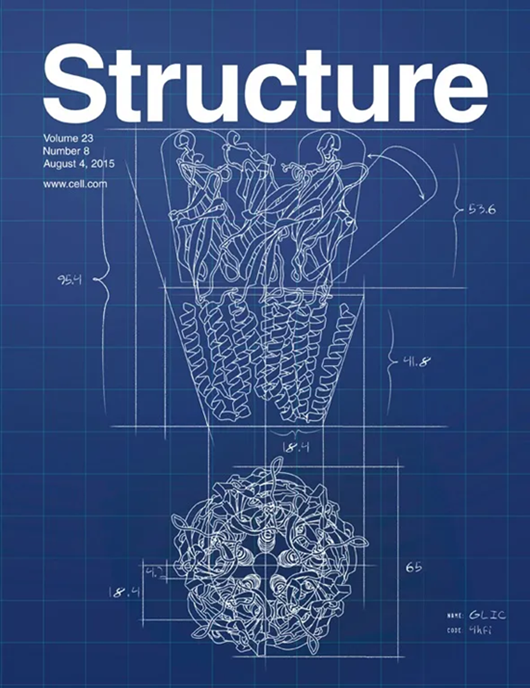Modeling phase separation of biomolecular condensates with data-driven mass-conserving reaction-diffusion systems
IF 4.3
2区 生物学
Q2 BIOCHEMISTRY & MOLECULAR BIOLOGY
引用次数: 0
Abstract
Phase separation, as one important type of pattern formation, plays a critical role in regulating cellular processes and sustaining ecological resilience. Mass-conserving reaction-diffusion (MCRD) models have been proposed to capture the underlying principles of phase separation. However, previous studies have largely established only phenomenological analogies between MCRD dynamics and phase separation. Here, we identify an experimental model system based on the double-stranded DNA-human protein p53 interactive co-condensate (DPIC). Importantly, all parameters required for the MCRD model can be independently and directly measured in this system, without reliance on parameter estimation or unverified assumptions. We demonstrate that (1) the DPICs serve as an ideal experimental system for establishing a direct and quantitative bridge between experimental DPICs and the MCRD framework and (2) the MCRD model captures more than just a phenomenological resemblance to phase separation, and quantitatively reproduces the underlying dynamics.

用数据驱动的质量守恒反应-扩散系统模拟生物分子凝聚物的相分离
相分离是一种重要的模式形成类型,在调节细胞过程和维持生态弹性中起着至关重要的作用。质量守恒反应扩散(MCRD)模型被提出来捕捉相分离的基本原理。然而,以往的研究在很大程度上只建立了MCRD动力学和相分离之间的现象学类比。在这里,我们建立了一个基于双链dna -人类p53蛋白相互作用共凝物(DPIC)的实验模型系统。重要的是,MCRD模型所需的所有参数都可以在该系统中独立和直接测量,而不依赖于参数估计或未经验证的假设。我们证明:(1)DPICs是一个理想的实验系统,可以在实验DPICs和MCRD框架之间建立直接和定量的桥梁;(2)MCRD模型不仅捕获了与相分离的现象学相似性,而且定量地再现了潜在的动力学。
本文章由计算机程序翻译,如有差异,请以英文原文为准。
求助全文
约1分钟内获得全文
求助全文
来源期刊

Structure
生物-生化与分子生物学
CiteScore
8.90
自引率
1.80%
发文量
155
审稿时长
3-8 weeks
期刊介绍:
Structure aims to publish papers of exceptional interest in the field of structural biology. The journal strives to be essential reading for structural biologists, as well as biologists and biochemists that are interested in macromolecular structure and function. Structure strongly encourages the submission of manuscripts that present structural and molecular insights into biological function and mechanism. Other reports that address fundamental questions in structural biology, such as structure-based examinations of protein evolution, folding, and/or design, will also be considered. We will consider the application of any method, experimental or computational, at high or low resolution, to conduct structural investigations, as long as the method is appropriate for the biological, functional, and mechanistic question(s) being addressed. Likewise, reports describing single-molecule analysis of biological mechanisms are welcome.
In general, the editors encourage submission of experimental structural studies that are enriched by an analysis of structure-activity relationships and will not consider studies that solely report structural information unless the structure or analysis is of exceptional and broad interest. Studies reporting only homology models, de novo models, or molecular dynamics simulations are also discouraged unless the models are informed by or validated by novel experimental data; rationalization of a large body of existing experimental evidence and making testable predictions based on a model or simulation is often not considered sufficient.
 求助内容:
求助内容: 应助结果提醒方式:
应助结果提醒方式:


